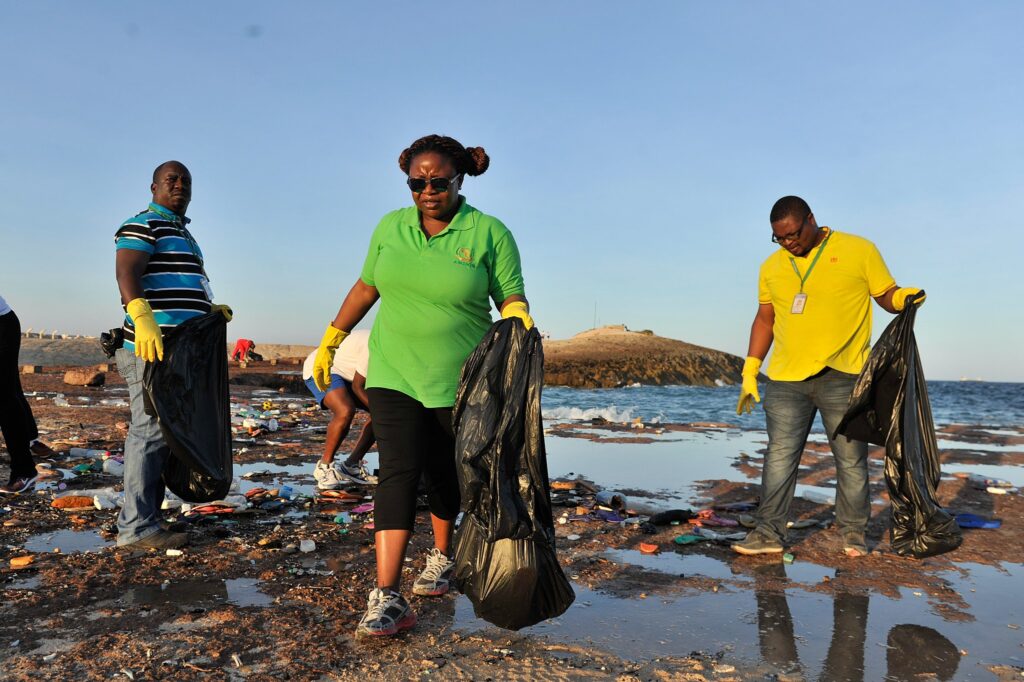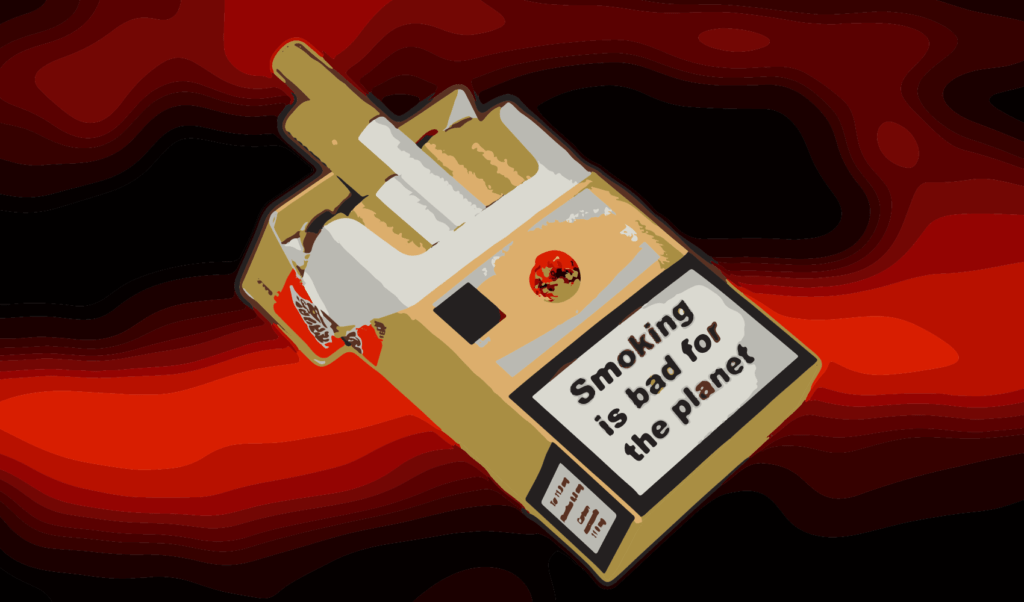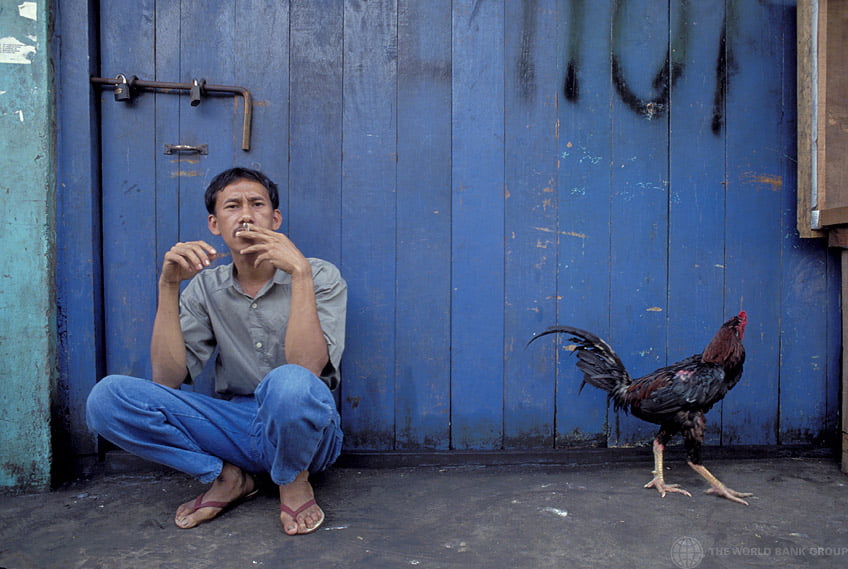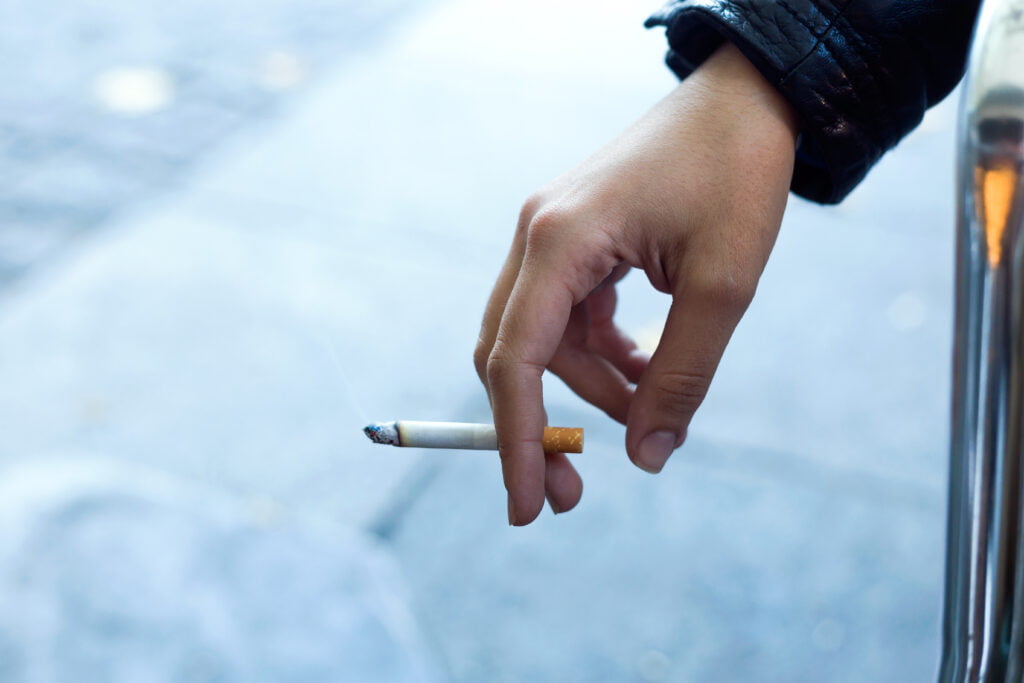Tobacco companies want you to know they are great corporate citizens. But it’s all a fig leaf for their environmental offences.
 Cigarette butts are the number one litter item the world over. : AMISOM CC0
Cigarette butts are the number one litter item the world over. : AMISOM CC0
Tobacco companies want you to know they are great corporate citizens. But it’s all a fig leaf for their environmental offences.
More than 6 million people have died of COVID-19 since its outbreak in late 2019. Seeing a chance to behave as a good corporate citizen, the tobacco industry leapt into action. It distributed soaps and information leaflets and paid for billboards and health kits via a charity it sponsors.
Corporate social responsibility (CSR) promotes the idea that a company should concern itself not just with profits and products but also with wider societal and environmental issues. The world’s largest tobacco firms, often referred to collectively as ‘Big Tobacco’, have made a great show of adopting CSR as a foundation of their corporate approach. They have carefully developed a reputation for corporate philanthropy, supporting an array of worthy causes from COVID to HIV/AIDS interventions to arts and cultural events and institutions. Law researcher Lissy Friedman has described Big Tobacco’s use of CSR as a “sword and a shield”: it is a bid to minimise damage to its reputation following exposés of its corporate malpractice.
What Big Tobacco does not mention in the glossy brochures describing its corporate good deeds is the pain and suffering its product causes.
The World Health Organization (WHO) estimates that tobacco directly kills up to 7 million people a year – more than COVID – and more than a million non-smokers die from exposure to second-hand tobacco smoke. Since half of smokers die from tobacco-related illnesses, estimates suggest the global death toll will rise to 10 million people a year by 2050.
Such stark statistics make uncomfortable reading for smokers and investors alike. But Big Tobacco is an expert at circumventing both bad press and government restrictions. Some have described it as the many-headed Hydra from Greek mythology: for each head cut off, two grow in its place. Big Tobacco’s CSR camouflage now includes more and more attempts to ‘greenwash’ its business activities. Greenwashing means to give a ‘green sheen’ or marketing spin to a business’s corporate public relations to imply its products, practices and policies are more environmentally friendly than they really are.
The extremely negative environmental impact of Big Tobacco has been explored in depth in a number of influential WHO reports. These have produced damning evidence in cradle-to-grave analyses ranging from crop production through manufacturing and transportation to tobacco use and disposal. Issues include agrochemical use, deforestation and land degradation, carbon-dioxide production in manufacturing, and hazardous waste and waste disposal into landfill. Agencies such as the University of Bath’s Tobacco Control Research Group have highlighted other issues, such as the role of child labour in global tobacco production.
In the face of such negative coverage, and conscious of ever-growing international concern about sustainability, environmentalism and social responsibility, Big Tobacco has systematically attempted to subvert such criticism. It has boldly engaged in a wide range of self-serving greenwashing activities, such as arranging beach clean-ups and funding environmental and disaster-relief organisations.
Greenwashing drove the recent revamp of the British American Tobacco (BAT) website. The site now features the company tagline ‘BAT: A Better Tomorrow’ as well as a rainbow-coloured theme. ‘Sustainability’ is one of eight headers on the top menu bar. The home page prominently notes ‘BAT is an FT Climate Leader again’ because it appeared in the 2022 Financial Times ranking of companies that had reduced their greenhouse gas emissions.
This is just one of the latest accolades Big Tobacco has acquired for ostensibly acting to protect the environment. Philip Morris International (PMI) has now been awarded A-list status in sustainability for five years in a row by the Carbon Disclosure Project (CDP), a non-government organisation that operates a global environmental disclosure system for large companies. Numerous examples of such environmental initiatives exist, including non-profits established or funded by the tobacco industry to give them a veil of environmental legitimacy. These include the tobacco industry-founded Sustainable Tobacco Programme, and Total Land Care, a non-government organisation that receives funding from Big Tobacco members the Altria Group, PMI, Japan Tobacco International (JTI) and BAT.
Big Tobacco also works with organisations committed to important social issues such as the Eliminating Child Labour in Tobacco Growing Foundation (ECLT) and the International Tobacco Growers’ Association (ITGA). At first glance such alliances demonstrate industry commitment to tackling these issues. But further examination reveals the ITGA is little more than a front for tobacco manufacturers. Leaked tobacco industry documents actually describe the ITGA using the term ‘front’, and outline how it can be used strategically on behalf of Big Tobacco. The ECLT was co-founded by BAT, and organisations with a similar agenda, such as the Slave-Free Alliance, receive funding from the tobacco industry. In 2019 ECLT members and donors included not only BAT but also JTI, PMI and Swedish Match.
Perhaps the most obvious issue with Big Tobacco’s greenwashing is the veneer of respectability it provides. Environmental awards and social responsibility credentials sound impressive, but the reporting systems used to claim some awards are unbelievably weak. Many rely on company disclosures, while others lack fixed criteria or goals, allowing companies to pick and choose metrics that suit them best. There is minimal oversight of such claims and if tobacco companies receive a poor result in an assessment they can simply opt out of the scheme – as BAT, JTI and Imperial Brands did with CDP’s Forestry initiative after they received poor scores.
Greenwashing of Big Tobacco is highly problematic for two further reasons. First, environmental, social and governance reporting by the tobacco industry seldom addresses their core business, often focussing instead on peripheral elements of their production, supply and sales systems. Second, greenwashing helps legitimise and normalise many tobacco products, when they remain an addictive carcinogen that kills one in two users.
In May 2022 the WHO released Talking Trash: Behind the Tobacco Industry’s ‘Green’ Public Relations, which called on governments to ban greenwashing by Big Tobacco. Tobacco packaging is regulated in many jurisdictions, but greenwashing has emerged quite recently — and this has left loopholes that the industry has exploited. For example, although the main European Union directive regulating the manufacture, presentation and sale of tobacco products explicitly says the labelling and packaging of tobacco products must not feature any element suggesting “a certain tobacco product has improved biodegradability or other environmental advantages”, the legislation does not prohibit such greenwashing elsewhere.
Big Tobacco’s greenwashing efforts are little more than a cynical attempt to claim some moral high ground. Under any form of scrutiny, they seem crude and obvious. But the trouble is only a small percentage of people critically investigate the industry’s claims of positive environmental and social action. That means many people are taken in by the green sheen of respectability the industry has carefully funded and awarded to itself.
Frank Houghton is director of the Social Sciences ConneXions Research Institute at the Technological University of the Shannon, Limerick, Ireland. He declares no competing interests.
Originally published under Creative Commons by 360info™.











